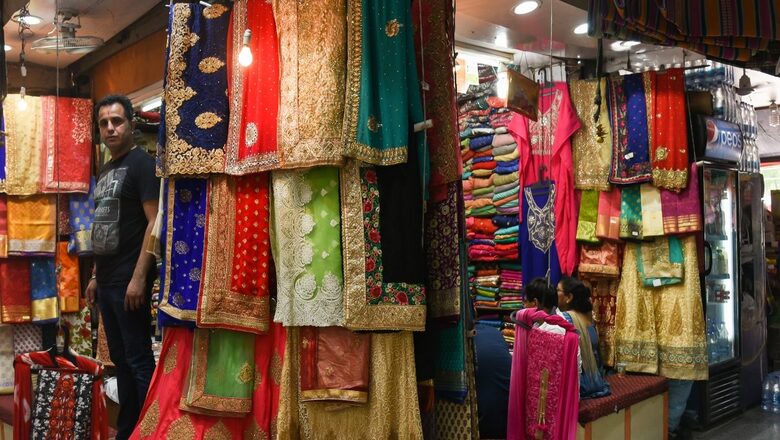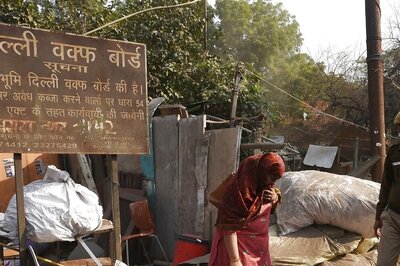
views
Fashion as we knew it, is over; people wear now, exactly what they feel like wearing
— Mary Quant
This is what Mary Quant, the British fashion designer who played a prominent role in London’s Swinging Sixties culture and was one of the designers who took credit for the miniskirt and hotpants, realised in the 1960s, but was possibly then hailed as an Avant Garde stance, holds true today for the Indian fashion scenario.
Fashion in India is no longer a straitjacketed concept cloistered in the cradle of glamour and opulence, heavily influenced and inspired by Western silhouettes and styles alone. Fashion has today acquired several meanings in the Indian context, especially passing over from the sceptical, unstructured experiments of Gen Y to the bold, bohemian and unabashed explorations of Gen Z.
In fashion, inclusivity in shape, size, colour and gender is the name of the game today, sustainability is the preferred choice and responsible fashion is a tenet everyone is opting for, to both practice and profess.
Indian fashion today is an extension of the self’s effervescent and unputdownable spirit. Fashion is a way to feel comfortable and at home in what one wears. Fashion is like finding one’s voice that says a lot about the person without even speaking. Fashion is that which makes the person stand out without him/her having to fit in.
No wonder therefore, due to its supreme comfort quotient, vibrant play of colours, availability of ample diversity in design and fit and the rich heritage of prints, blocks and embroidery, Indian ethnic wear in both its traditional and fusion avatars, has come to be extremely popular among our youngsters today. Ethnic fashion had always been a natural choice in apparel for both men and women for festivals and celebrations, but today, even as corporate and casual wear, we notice a plump majority, especially among the youth, opting for ethnic apparel because of the following reasons:
- Comfort: It’s the supreme style quotient today. India’s tropical climate favours the use of cotton, linen and silks, all of which sit very well for ethnic experiments in clothing.
- Innovation: Innovative and novel fabrics, styles, drapes and colours are winning the hearts of many.
- Diversity and variety: There’s a very wide range to choose from, innumerable labels and several mix-and-match styles and silhouettes to try.
- Ethical and responsible fashion: The consumer is more inclined towards the slow, handcrafted artefact/apparel, that has a humane touch and makes for a unique buy; that restores environmental balance and supports sustainability.
- Space to experiment: Ethnic fashion is liberating as in the case of a dupatta or a saree for instance; there is no need to “fit in” because there is no correct or wrong way of draping anymore, there is only “your” way. Individualized, quirky and out-of-the-box designs and drapes in ethnic fashion are the order of the day.
- Affordability and advertising: Social media influencers, media personalities and celebrities are found aligning themselves with sustainable/handloom ethnic brands, automatically translating into more and more consumers inclining towards the same.
And above all of these, ethnic or “desi” fashion always has a story to tell; either it is about the weaving family gathered around the loom, singing in merriment in a remote village of Chanderi or Maheshwar in Madhya Pradesh or about a painstaking hand crafted motif made out of resham and zari, by burning the midnight oil near the ghats of Benaras, or a meticulously administered embroidery pattern created by trembling fingers foregoing the afternoon siesta while sipping on the ‘kahwa’ in the valley of Kashmir or of watching several organic colours coalesce into a vibrant fusion in a humble coconut shell, waiting to adorn the hand etched designs upon the finest mulberry fabric to create Odisha’s famous Patachitra, that replicates scenes from the Ramayana and the Mahabharata.
India has been home to embroidery styles of Zardozi, Chikankari, Gota-Patti, Kantha, Lambani, Kashida, Suzni, Ari, Parsi and so much more and the womb where unmatched weaving techniques such as Banarasi, Kanjeevaram, Kanni, Maheshwari, Chanderi, Moirang Phee etc. took their first breath. India’s rich heritage has contributed to the fashion industry in immense ways. With the modern fashion industry becoming increasingly aware and striving for a sustainable future, it has only made sense for India to take a dip into its timeless legacy. Indian history is on its revival journey, thanks to a new generation of designers, textile curators and fashion labels bringing about a much-needed fashion revolution by going back to our roots.
The past few years have seen a rise in conversations about sustainability, green living, waste reduction, and a growing appreciation for local artisans. The pandemic, however — with people experiencing first-hand panic due to lack of resources — amplified these whispers into concrete action. The lockdown led to changes in consumer behaviours and consumption habits, with people opting for comfort over glamour and preferring long-lasting pieces instead of fast fashion. The pandemic also brought about a fresh wave of heightened focus on ‘Make in India’, local artists, and self-sustenance.
To cite a few potent examples, in the past decade, Kolkata-based, internationally acclaimed Sabyasachi Mukherjee, one of the most successful designers out of India, launched a ‘Save the Sari’ project. The garment has come a long way since then with the extremely popular #100saripact making it a must-wear, and the numerous Facebook groups popularising not only the concept but also bringing back the vogue of the saree.
Similarly, started as a passion project from a family home, the Indian Ethnic Co, is a Mumbai-based brand founded by mother-daughter duo Hetal and Lekhinee Desai in 2016. Lekhinee says that the brand focused on just one goal: to make Indian fashion responsible, sustainable, and truly handcrafted.
Along similar lines, Ummaira, an ethnic women’s wear brand from Kolkata which roots for authentic handcrafted weaves from all over India, has started an annual event coined ‘The Silks of the East’.
Like pearls concealed in oysters, silks of eastern India are precious gems that carry our heritage and yet have so long silently suffered under layers of ignorance and apathy while their more fortunate cousins like the Kanjeevaram, Banarasi, Paithani, etc, are lauded and celebrated as inseparable organs of all sorts of festivities and auspicious events in our country and beyond.
Ummaira, with this eye-opener of an initiative, ‘The Silks of the East’ attempts to revisit, revive and reveal to the world the rich tales of weaving culture and storytelling that define these heritage silks of the Eastern part of the country which is home to several varieties of breathtaking silks like mulberry, muga, paat, eri, tassar, ghicha, bishnupuri, katan etc embellished by intricate weaving traditions of baluchari, jamdani, Moirang Phee or hand block printing or handcrafted embroidery such as Kantha and hand painting techniques of Madhubani from Bihar and Patachitra from Odisha.
“What you wear is how you present yourself to the world, especially today when human contacts are so quick. Fashion is instant language,” says Miuccia Prada. If clothes are deemed to do the talking, India is increasingly choosing to speak the ethnic language and hence ‘desi’ is now the new cool.
Debaroopa Bhattacharyya is founder and editor-in-chief of Tribe Tomorrow Network. Views expressed in the above piece are personal and solely that of the author. They do not necessarily reflect News18’s views.




















Comments
0 comment